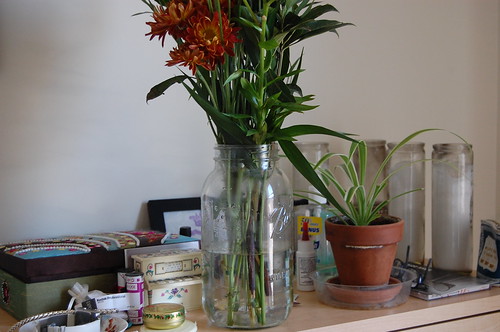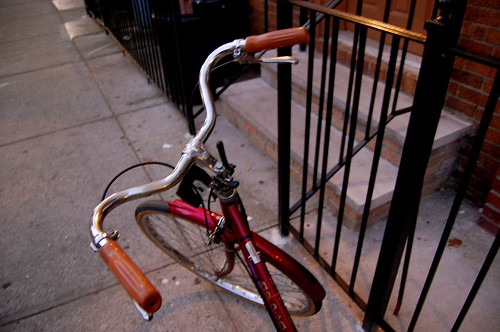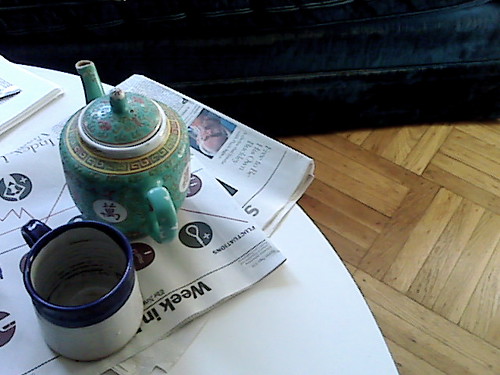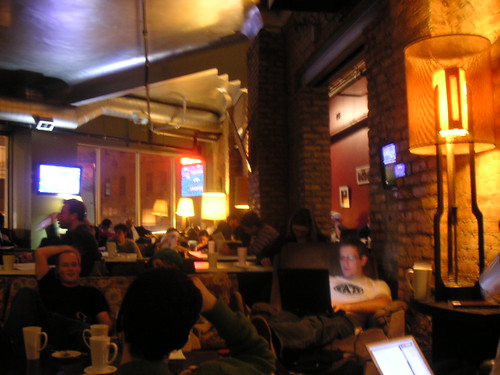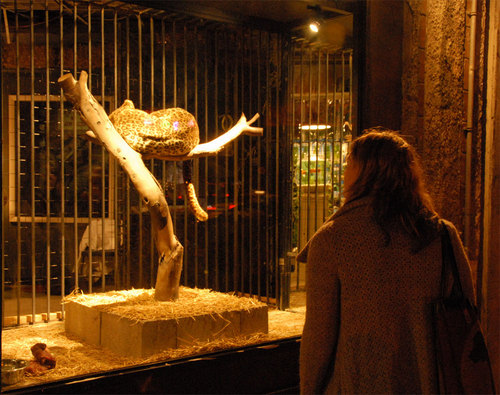Once again, this was not the headline originally written for the column. It's not too bad, though, so oh well. Hi guys. I have the flu, I think. This is a post I don't have to put too much effort into right now, because I wrote it almost two months ago. Convenient! Here you go.
It's no secret that HBO has been in the vanguard of storytelling for the past decade - but not only in its programming. The pay-TV giant has been revolutionizing its category, marketing itself not just as a network but as an entertainment property.
Last year, in addition to promoting the end of The Sopranos as if it were a blockbuster film - going so far as hiring Annie Leibovitz to photograph the cast for a Vanity Fair spread - HBO broke ground with HBO Voyeur, which showed the company understands the importance of promoting its brand as much as what it airs. In case you missed Voyeur, it was the winner of dozens of awards, including the Gold Clio for consumer-targeted site and Cannes Promo Grand Prix, and it was written up on more than 500 blogs. Watch the story at
hbovoyeur.com.
Refusing to rest on its laurels, HBO continues to adapt to its surroundings, constantly reinventing itself. By the time you read this, the network will have promoted its new vampire series, True Blood, for four months before it even premiered. The company enlisted independent agency Campfire to help in promotion. Previously involved in Audi's "Art of the Heist" and "Beta-7" for SEGA, Campfire is no stranger to creating excitement around a launch.
Back in May, a handful of horror enthusiasts received mysterious letters written in dead languages. The fans came together online to help each other decipher the letters, and eventually discovered a Web site guarded and run by a vampire. The site revealed that a synthetic blood, called Tru Blood, had been developed in Japan, and that it could finally give vampires a chance to live among humans.
[ed: What? That sentence sounds weird. I didn't write it that way.]While people swarmed to forums and debated the implications of humans and vampires coexisting for the first time in history, fans began to receive packages containing "samples" of Tru Blood in vials. Fake want-ads were placed, searching for the samples mailed to vampires around the world from its inventors in Japan. Ads for the beverage appeared in mass channels, vending machines of the stuff were constantly marked "Sold out," and a fake news story reported that a Tru Blood truck had overturned in Texas and flooded a highway.

Promotions for vampire-friendly products and services began to surface, too, including a dating site, Lovebitten, a bar in New Orleans called Fangtasia and a windowless motel containing minibars stocked with Tru Blood. Concurrently, ads calling for vampires' equal rights were run on behalf of the American Vampire League.
HBO and Campfire added an incredible amount of detail and countless layers of content to what could have been a simple promotional campaign. People can either immerse themselves in it, clicking on links that take them deeper into the story, or they can just see the work in mass channels - in some cases, for a fictional drink rather than the show itself - and look forward to True Blood. HBO has made itself into an entertainment brand, and guess what? People are very happy to play a game with them.
I still haven't seen the show, much to my chagrin. I don't have HBO and haven't tried hard enough yet to find a friend who does and also watches it. How is it?



